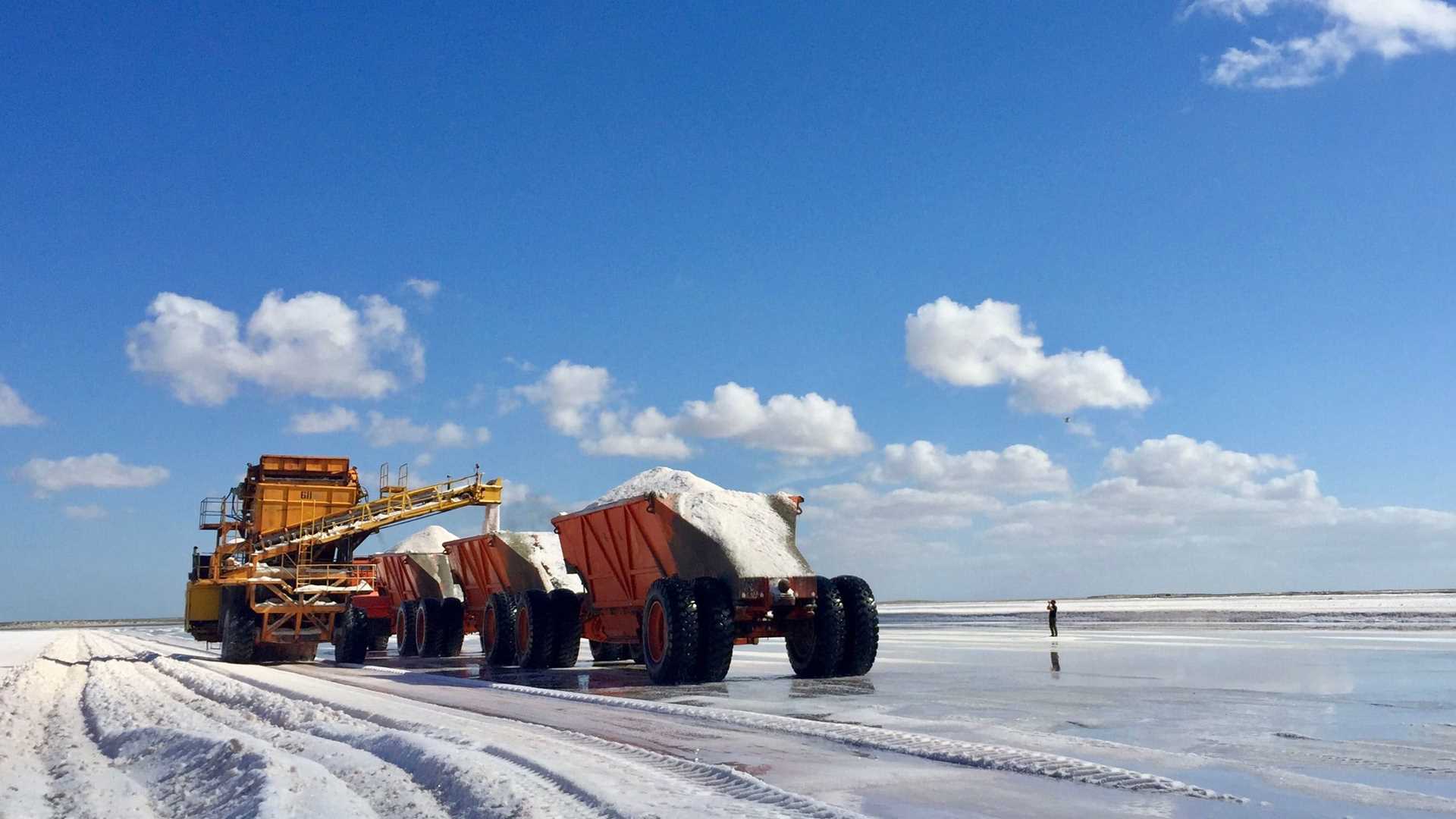Our busy day ashore began with expedition landing craft rides through Ojo de Liebre, a coastal lagoon within the El Vizcaino UNESCO Biosphere Reserve. An essential habitat for multiple endangered species as well as migratory birds and gray whales, this dynamic environment was worth careful exploration. While the whales have not yet arrived from their
The west coast of the Baja Peninsula is exceptionally well-suited to salt-making with expansive flat areas, arid climate with low precipitation, intensive year-round sunshine, strong winds, and easily accessible ocean. Founded in 1953, the largest salt manufacturing plant in the world is located here to capitalize on these characteristics; today, it extracts “white gold” from evaporated sea water. With guides from the facility, we watched salt harvesting vehicles at work and drove among the concentration and crystallization ponds.
After a delicious lunch highlighting local seafood, we traveled out of town to learn about the Lindblad Expeditions/National Geographic-supported Peninsular Pronghorn Recovery Project. With a conservation effort overview in mind, we toured one of the fenced enclosures that protect does and fawns as the populations grow. In all, today offered a fascinating glimpse of how economy and nature are closely interwoven in Guerrero Negro.







